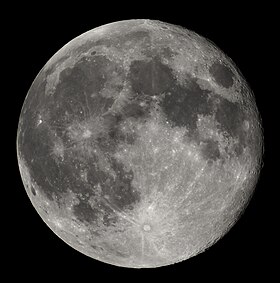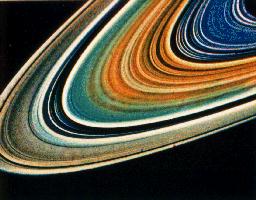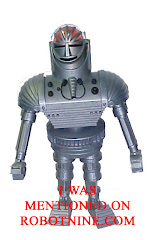According to the Guide, all you have to do is hurl yourself at the earth and miss. This, you will easily surmise, is not easy to do. There are explanations of how you might accomplish missing the earth; distractions and the types, thereof, mostly. Once you initially and successfully miss the earth, there are ongoing distractions which are needed to remain missing it.
I mused on this for awhile (I muse often, hence the name of this blog) and came to the conclusion that this is what satellites do. It is quite possible that Mr. Adams mused on what satellites do and then came up with the chapter. Thereby causing me to muse in the opposite direction. But I digress.
 Let's get back to satellites... Our moon is in a delicate balance between gravity and speed. Yet it is moving away from the earth at a rate of approximately 3cm per year. I am led to believe that the moon will never, barring some odd catastrophe, leave its orbit. I dislike the word "never" in this context.
Let's get back to satellites... Our moon is in a delicate balance between gravity and speed. Yet it is moving away from the earth at a rate of approximately 3cm per year. I am led to believe that the moon will never, barring some odd catastrophe, leave its orbit. I dislike the word "never" in this context.There are four main theories of how the moon formed.
1. Co-Formation (Earth & Moon formed together in place)
2. Capture (Earth gravitationally captured the Moon)
3. Fission (Moon split off from a fast-spinning proto-Earth)
4. Giant Impact (Proto-Earth hit by a Mars-sized body and Moon formed from the debris).
Some say the moon does not revolve, as the earth does, but this is not entirely true. It's just that its rotation is such that only one side ever faces the earth. That is, its revolution precisely matches its orbit around the earth. You have to think about this to realize it. It takes some musing.
My musings then took me to think about the various moons around the planets we can see. That is, the ones in our own solar system. We can't see the planets in other solar systems but we can surmise that they will not differ greatly from the ones nearby.
 One planet in our system seems to have no moons, Saturn. Yet it does. It has thirty of them. It also has rings.
One planet in our system seems to have no moons, Saturn. Yet it does. It has thirty of them. It also has rings.Saturn is not the only planet in our system to have rings. So do Jupiter, Uranus (do not giggle), and Neptune.
All of this brings me back to my original musing. Which is about balance. Just as our own moon is in a delicate balance of speed versus gravity, so are other satellites in the same delicate balance around their respective planets. And planets around their suns. And systems around their galactic cores and, one muses, galaxies around the universal center.
I'm getting dizzy.
And this musing is why I never get anything done.
[1602/1603/1472]







3 comments:
A-musing.
When I was a child in elementary school I proposed a theory. I noticed the similarities between the galaxies and the tiny atoms that make it all up. The Earth is negatively charged much like an electron which is what got me thinking.
My "teacher" said that the similarities were purely visual because of the diagrams I had seen.
I proposed that perhaps this was only thus because we, located physically in the galaxies, can only see it at our "speed." She said my idea was preposterous and other students laughed at me.
I only wish my "teacher" understood gravity and time a little better so as not to humiliate a 6-7 year old publicly that way.
She's probably dead by now so I guess there's that.
Oh and about the moon. I have spent many hours stargazing contemplating its origin. Because of its ghostly white appearance to us, I think it was created around the same time. It's proportions are pretty close to spherical so any break off and/or collision would have left more evidence I think. Other moons are oddly shaped and discolored. The lighter "appearance" of the moon (in comparison to brown Earth) makes me imagine that the lighter dust surrounding the proto-Earth just collapsed in on itself during the first few millenia of Earth's creation.
Hektik - I thought I was the only one who looked at it that way. Which gave me the hypothesis that the entire universe is simply a nuclear explosion on some planet large enough to make sense of this. But your teacher was right about the representation. It was merely an image that depicted the concept and not an actual image. Still, she could have been a lot more tactful and encouraging.
Now they are modeling them as a core with a electron "cloud". And this is based upon the image results of a scanning tunneling microscope. But how, I say, do we know that this image is accurate? Could the "cloud" simply be the blur of orbiting electrons? Would our solar system look like a cloud with a bright dot in the center if viewed from far enough away? And what does an atom within an explosion look like?
A-musing.
When I was a child in elementary school I proposed a theory. I noticed the similarities between the galaxies and the tiny atoms that make it all up. The Earth is negatively charged much like an electron which is what got me thinking.
My "teacher" said that the similarities were purely visual because of the diagrams I had seen.
I proposed that perhaps this was only thus because we, located physically in the galaxies, can only see it at our "speed." She said my idea was preposterous and other students laughed at me.
I only wish my "teacher" understood gravity and time a little better so as not to humiliate a 6-7 year old publicly that way.
She's probably dead by now so I guess there's that.
Oh and about the moon. I have spent many hours stargazing contemplating its origin. Because of its ghostly white appearance to us, I think it was created around the same time. It's proportions are pretty close to spherical so any break off and/or collision would have left more evidence I think. Other moons are oddly shaped and discolored. The lighter "appearance" of the moon (in comparison to brown Earth) makes me imagine that the lighter dust surrounding the proto-Earth just collapsed in on itself during the first few millenia of Earth's creation.
Post a Comment